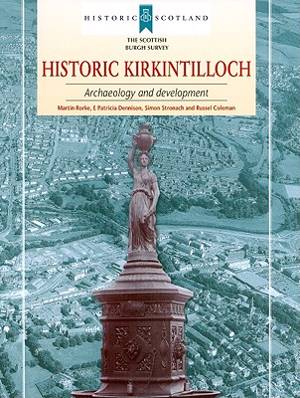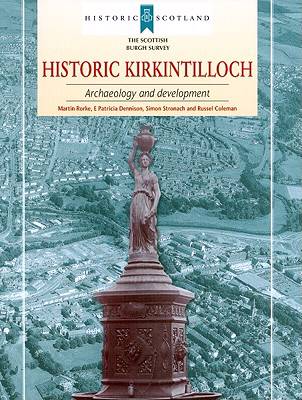
Door een staking bij bpost kan je online bestelling op dit moment iets langer onderweg zijn dan voorzien. Dringend iets nodig? Onze winkels ontvangen jou met open armen!
- Afhalen na 1 uur in een winkel met voorraad
- Gratis thuislevering in België vanaf € 30
- Ruim aanbod met 7 miljoen producten
Door een staking bij bpost kan je online bestelling op dit moment iets langer onderweg zijn dan voorzien. Dringend iets nodig? Onze winkels ontvangen jou met open armen!
- Afhalen na 1 uur in een winkel met voorraad
- Gratis thuislevering in België vanaf € 30
- Ruim aanbod met 7 miljoen producten
Zoeken
Historic Kirkintilloch
Archaeology and Development
Martin Rorke, E Patricia Dennison, Simon Stronach, Russel Coleman
€ 15,95
+ 31 punten
Omschrijving
This survey offers an accessible and broad-ranging synthesis of the history and archaeology of Kirkintilloch, Dunbartonshire, and aims to inform conservation guidance for future development. Kirkintilloch lies at a key point in Scotlands central belt. Here, by accident of geography, the Antonine Wall, ancient and modern route ways and the Forth and Clyde Canal pass within yards of each other. Here also, iron founding was added to the linen and cotton weaving industry giving Kirkintilloch an important role in Scotlands nineteenth-century economic development. The town has benefited from archaeological investigations in advance of development, and those designed to enhance our knowledge of the Antonine Wall. The authors consider where the areas of archaeological potential lie, in order to inform future management of Kirkintillochs historic environment, and pose questions about the evolution of Scotlands burghs.
Specificaties
Betrokkenen
- Auteur(s):
- Uitgeverij:
Inhoud
- Aantal bladzijden:
- 91
- Taal:
- Engels
- Reeks:
Eigenschappen
- Productcode (EAN):
- 9781902771588
- Verschijningsdatum:
- 31/12/2009
- Uitvoering:
- Paperback
- Formaat:
- Trade paperback (VS)
- Afmetingen:
- 188 mm x 245 mm
- Gewicht:
- 338 g

Alleen bij Standaard Boekhandel
+ 31 punten op je klantenkaart van Standaard Boekhandel
Beoordelingen
We publiceren alleen reviews die voldoen aan de voorwaarden voor reviews. Bekijk onze voorwaarden voor reviews.











